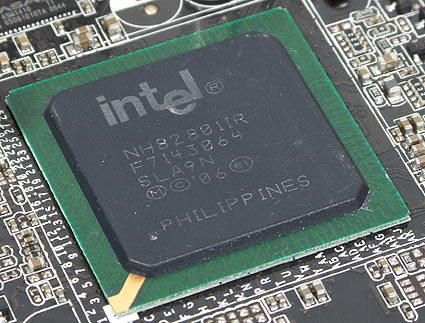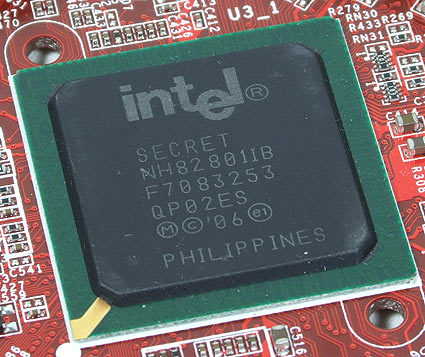Intel Intros 3-Series Chipsets with FSB1333 and DDR3
ICH9 Southbridge
There are three Southbridge components: ICH9 (82801I), ICH9-R (82801IR) and ICH9-DH. We haven't received a motherboard with the last one, so I'm not sure about the model number at this point. Intel made lots of improvements in the details, which our storage and USB 2.0 benchmark results prove. ICH9 provides better USB 2.0 performance than any other chipset product on the market, and the RAID performance increased slightly when compared to ICH8 and ICH7.
Intel utilizes the second hard drive in a RAID 1 array (mirroring for data protection) to speed up reads, as data is available on two drives. According to Intel benchmarks, this helps to speed up application loading and also to reduce Windows XP startup time considerably. Considering that the performance of Intel's ICH-integrated storage controllers have always been good (ICH9 again is), this sounds realistic. Don't expect RAID 0 performance, though, as a RAID 1 doesn't store data in performance-optimized stripes, but the controller has to determine whether or not it makes sense to access both drives for read operations.
Rapid Recover technology is a modification of RAID, as it creates images of your system hard drive and stores an exact copy on a secondary hard drive. The system can then be easily restored should the primary drive fail. We haven't tried this feature due to time constraints, but will follow up on ICH9 features and performance shortly. Intel also introduced support for SATA port multipliers, which allows users to attach up to four Serial ATA hard drives to a single port. While this doesn't help much inside a PC (six ports should be sufficient for 95% of all users), it makes a lot of sense for eSATA applications where you want to hook up a multi-drive device using one single cable.
This is taken from an Intel presentation Source: Intel
Get Tom's Hardware's best news and in-depth reviews, straight to your inbox.
Current page: ICH9 Southbridge
Prev Page First DDR3 DImms: Corsair CM3X1024-1066C7 Next Page RAID Array Creation
Patrick Schmid was the editor-in-chief for Tom's Hardware from 2005 to 2006. He wrote numerous articles on a wide range of hardware topics, including storage, CPUs, and system builds.



